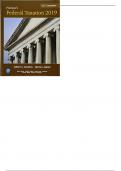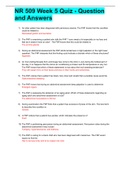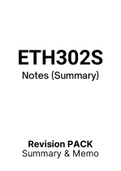Exam (elaborations)
Pearson's Federal Taxation 2019 Corporations Partnerships Estates & Trusts 32nd Edition by Timothy J. Rupert - Test Bank
- Module
- Federal Taxation - Test Bank
- Institution
- Federal Taxation - Test Bank
Pearson's Federal Taxation 2019: Comprehensive, 32e (Rupert/Anderson) Chapter C1: Tax Research LO1: Overview of Tax Research 1) Tax planning is not an integral part of open-fact situations. Answer: FALSE Page Ref.: C:1-2 Objective: 1 2) When a taxpayer contacts a tax advisor requ...
[Show more]







